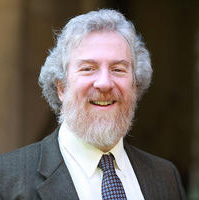Healing of Body and Soul (Part 2)

If an anthropology student from the University of Mars were to attend a Shabbat morning service in an American Jewish synagogue, what kind of understanding about our real synagogue lives might emerge in the student’s term paper on the topic? The essay might suggest that announcements and kiddush are the most important parts of the experience because that is when the most people are present. The Martian professor (whose appearance we will not explore here) might urge the student to be more subtle and to observe closely the body language of the human participants to discern which parts of the service are most engaging and important to those present.
When I invite my students at JTS to identify which parts of the Shabbat morning service are most important to congregants, the first response from the class is often a theological (or halakhic) Top Ten—including the Shema’; the ‘Amidah; the sermon (from rabbinical students); the kedushah (from cantorial students); and, sometimes, the Mourners’ Kaddish.
Then I ask them to think about the atmosphere at certain points—body language, attentiveness, focus, and sometimes open tears—and there is often significant (but never total) agreement that the mi sheberakh (prayer for healing) attracts the greatest engagement and attention from the congregation. This is a relatively new phenomenon that would not have been observed even a generation ago, even though it was not uncommon for a congregant with a sick relative to ask that a mi sheberakh be recited by the hazzan, rabbi, or gabbai. The well-known text and musical composition by Rabbi Drorah Setel and Debbie Friedman (z”l) have certainly added greatly to the experience of many congregations, but the importance of the mi sheberakh is palpable in synagogues where that text and melody are unknown.
In last week’s commentary, we explored the liturgical text of healing from the daily ‘Amidah, noting that it addressed itself to healing of “body and soul.” I suggest that the importance of this text, with its many rituals and melodies, grows out of a yearning among many contemporary Jews to bring their deepest experience, their inner pain, into the synagogue. Many of our texts and practices are of great antiquity, with profound depths of meaning—and are also arcane and hard to understand. We all understand illness and healing, and—theologically problematic though it might be—we can all imagine praying to an omnipotent God that our beloved friends and family members find healing of body, mind, and soul.
We recall that Moses prayed for his sister, Miriam; that Elijah prayed for a dying child; and that many Sages prayed for their colleagues and students and members of the community. Healing is in part a well understood medical science, but also a mystery. During the week, we turn to physicians and healers with their sciences and arts. On Shabbat and in prayer, we confront the mystery among our community, in the presence of the Torah, and always in the presence of God.
Debbie Friedman sings her composition Mi Shebeirach.
Dr. Leonard Lehrman accompanies cantors Faith Steinsnyder (Hazzanut coach in the H. L. Miller Cantorial School and College of Jewish Music of JTS) and David Perper in Dr. Lehrman’s Mi Shebeirach, part of his 1997 Friday Evening Service, commissioned by North Shore Synagogue. The two cantors premiered this duet version while they were on their honeymoon.
As always, I am interested in hearing comments and reflections on these thoughts about prayer and liturgy. You may reach me at sabarth@jtsa.edu.



